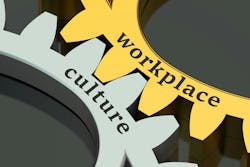From firefighting to reliability: Break free from reactive maintenance with a reliability mindset
Key takeaways
- A reliability mindset shifts maintenance from reactive firefighting to preventing failures and improving long-term performance.
- Promoting technical experts without leadership training traps plants in “hero mode” instead of building sustainable reliability.
- Small, disciplined steps—planning, operator engagement, and challenging limiting beliefs—drive cultural change and lasting results.
In too many plants, “keeping it running” has become the badge of honor, rather than promoting a reliability mindset. When I walk into a plant, I'm likely to find one of two different scenarios.
In the first, the plant is in a reactive mode. The maintenance technicians are running from one crisis to the next, patching equipment just enough to limp through to the next shift. It seems there's never time to do the maintenance right the first time, but plenty of time to fix it when it breaks again.
In the other, similar types of assets run smoothly. The downtime is predictable, and maintenance activities are planned and scheduled. The team focuses on improvements. The difference isn't the equipment or even the budget.
Often, the difference is what I like to call the “reliability mindset.”
What is reliability mindset?
As a plant manager or maintenance manager, you likely often discuss reliability. I prefer the military definition of reliability—the probability that a system, equipment, or component will perform its intended function under specific conditions for a defined period.
When the ISO 55000 committee was defining the standard, one of the biggest challenges it faced was defining the term “asset.” Assets include equipment, data, and people, too. And this is where mindset comes in—the people. Mindset is a collection of beliefs, attitudes, and assumptions that shape how we perceive the world and how we interact with it. If we allow a culture that constantly accepts failure, especially repetitive failures, then we'll always be in a reactive broke-fix state.
I define a “reliability mindset” as the combination of beliefs, attitudes, and disciplined behaviors that make achieving reliability possible. And it starts at the top.
A real trap on the plant floor
I often work with maintenance organizations that are caught in the trap of “hero mode.” The maintenance leadership is promoted into their positions because they're the best technicians on the floor. No one can troubleshoot a machine faster, and their technical skills make them invaluable (as technicians). They become the obvious choice for promotion.
And herein lies the trap: Rising through a reactive culture will keep you locked in the firefighting mindset. It's what you have come to accept for years. The same equipment problems haunt you month after month. The planners never have time to plan because they are constantly pulled into emergencies. You believe you're doing the right thing because you “keep it running.”
Ultimately, what helped you get promoted as a maintenance leader won’t keep you there or get you to the next level. It's a real struggle for maintenance managers and supervisors.
They're promoted based on technical skills, but rarely given the training, coaching, or strategic tools to lead a reliability-centered transformation. You'll often hear, “We don’t have the people, we don’t have the budget, and production won’t give us downtime.” Sound familiar?
Those are self-limiting beliefs that reliability isn’t possible there.
My challenge is to get them thinking differently, changing their mindset. Pilot a preventive maintenance optimization on a critical line, beginning with planning and scheduling, or getting the operations group to report minor defects.
Steps to achieve the reliability mindset
Remember, mindset is what you believe and how you act. Here are some steps to begin:
- Get educated.
You don’t know what you don’t know. If you haven't already done so, educate yourself and your team. Don’t forget to include the plant manager and your production partners. Discover what’s possible and paint a clear vision of the desired future state. - Challenge the self-limiting beliefs.
Listen for phrases like “Production will never give us equipment access” or “We don’t have time to plan.” Recognize these as barriers, not truths. - Redefine success.
While you must recognize the technicians who come into the plant in the middle of the night to fix down equipment, that’s not the end game. Reward the people who prevent assets from failing in the first place. Create a culture that refuses to accept repetitive failures. - Start small.
Rome wasn’t built in a day. Don’t try to fix the entire plant overnight. Pick one! One line, one area, or one asset to prove that reliability is possible. Nearly all the reactive plants I visit lack a strategic roadmap for change. Where is yours? - Engage operators as partners, not customers.
Reliability isn’t just a maintenance function. Operators are the first line of defense. Teach them to identify and report potential failure conditions early. - Build discipline around planning and scheduling.
Planned work is predictable, safer, and less expensive. Moving from 20% to 50% planned work can transform morale and the business results. - Develop your leadership skills.
If you were promoted for your technical skills, recognize that leading reliability requires a different set of tools: communication, coaching, influencing operations, and building a plan for cultural change. - Learn from every failure.
When something breaks, understand the “why.” That should be the first question asked by leadership when failures occur. Then, take action to ensure that failure is not repeated.
Know that your true value as a leader isn’t how fast you can fix equipment—it’s how well you can prevent failures and build a team that believes reliability is possible.
The reliability mindset is about progress, not perfection-one planned job, one prevented failure, one shift in belief at a time.
About the Author
Jeff Shiver
Founder and managing principal at People and Processes, Inc.
Jeff Shiver CMRP is a founder and managing principal at People and Processes, Inc. Jeff guides people to achieve success in maintenance and reliability practices using common sense approaches. Visit his website www.PeopleandProcesses.com, and contact him on LinkedIn at www.linkedin.com/in/jeffshiver or via email at [email protected].

